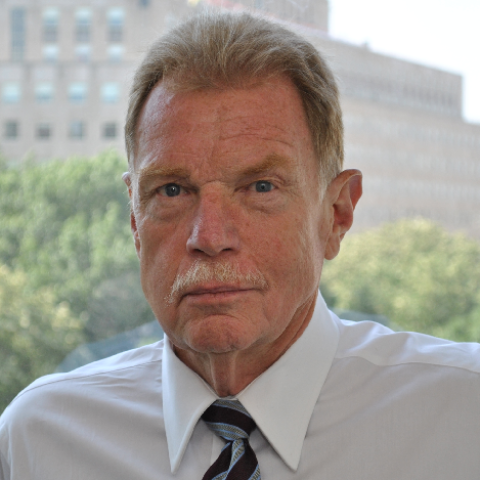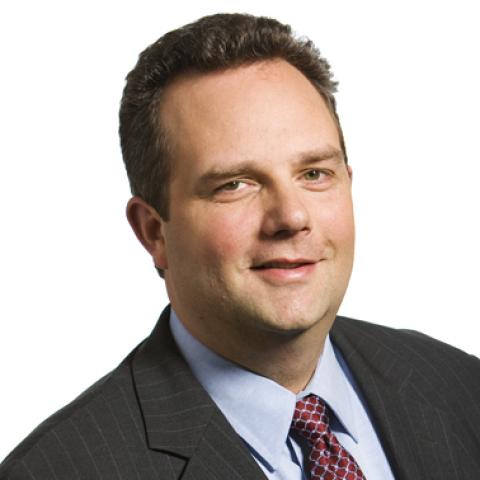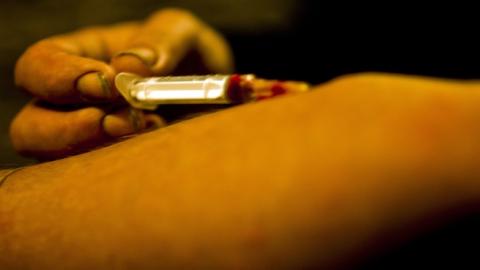Nearly 50,000 Americans died of drug overdoses in 2014, the latest year for which there are statistics, with heroin overdose deaths alone increasing 440 percent over the previous seven years. On March 29, at an Atlanta summit on drug overdose deaths, President Barack Obama acknowledged that more people now die of drug overdoses than die in traffic accidents. In the eighth year of his presidency, we are now in one of the most lethal drug epidemics our nation has ever endured.
What did the president offer as a response? The policy list is familiar: more training for physicians, insurance “parity" for drug treatment, expanded access to opioid-overdose antidote medication, and the expansion of "syringe services" that give the addicted needles with which to continue the pursuit of their deadly habit.
Obama's proposals, some useful, but most misguided, are nearly all directed at the results of the epidemic, not its causes, attempting to mitigate the fate of those already trapped in drug use. In contrast to a true public health approach, Obama's policies do not address the epidemic's spread, do not target the source of the pathogens, and do not prevent new victims from succumbing to addiction. It is an agenda that will neither contain nor reverse the epidemic.
Take the administration's promotion of "medically assisted treatment" (MAT) for the opioid dependent — an example of its desire to cope with the disease of addiction rather than healing those who suffer from it. MAT (the prescribed use of synthetic opioids like buprenorphine or methadone as substitutes for opioids) can be an important intermediate treatment to help stabilize the addicted and get them on the path to recovery. But rather than use it as a bridge to full recovery as has been the usual protocol, the Obama administration has declared MAT as the final, long-term solution for what it sees as a "chronic, relapsing disease." Abstinence is dismissed as the wrong goal entirely; instead, the addicted are offered a lifetime of dependence on opioid-substitutes.
Such policies seek to accept and accommodate the epidemic rather than heal it. And what of the drug crisis beyond opioids? Methamphetamine, marijuana, and cocaine, for instance, also present addictive challenges and require treatment. But there is no similar "medically assisted treatment" or overdose antidote for cocaine or meth. Those addicted to these substances were simply ignored by President Obama.
As addiction and the death toll climb across the country, the administration dogmatically pursues an after-the-fact "harm-reduction" ideology, averse to prevention, supply-reduction, or enforcement. They are bending their diagnosis of the opioid epidemic until it fits the available, and ideologically desired, tools of response.
To the extent the president does address prevention, it is in citing the role of prescription pain-pills in predisposing users to take up heroin. Restricting doctors' prescribing behavior is offered as a way to control the heroin outbreak. There is some validity to this perspective. But we have a dual epidemic of opioid use. One is strictly medical, and it is beginning to wane as doctors take more seriously the risks of addiction. The other epidemic involves heroin: It is in full conflagration and is not susceptible to the medical adjustments that the president proposes.
The administration's own experts at the Centers for Disease Control (CDC) and the National Institute on Drug Abuse (NIDA) have recently presented evidence that the heroin problem cannot be apprehended in the fashion the White House proposes; that is, the "transition" from prescription opioids to heroin has been oversold. In reality, as a NIDA administrator has noted, there is a separate heroin supply "pull" that accounts for the extraordinary increase in both heroin use and overdose deaths in the past several years, particularly accelerating since 2010 and with no end in sight. NIDA experts further note that transition from prescription pain relievers to heroin "is rare."
It is the escalating supply of heroin, now flooding in from Mexico, that must be addressed — that and the trade in illicit fentanyl, a highly potent, synthetic opioid that is making the heroin epidemic even more lethal. Fentanyl is available not because it's being diverted from legitimate pharmaceutical sources but because Mexican drug traffickers are producing it.
Fentanyl deaths appear to be misclassified, according to the CDC, wrongly listed as due to prescription drugs when they are actually part of the heroin crisis. Since prescription misuse peaked around 2006 and has been in recent decline, this is an important realization: Driving the epidemic of opioid deaths is the illicit heroin supply, and the administration isn't proposing a single measure to respond to this fact.
The administration's solutions — such as "prescriber education" grants and efforts to "take back" unused medications — are wholly inadequate. They demonstrate a pattern of diagnosing the crisis in a way that fits their preexisting tools and policy predilections, while refusing to acknowledge the true nature of the heroin threat.
Taking the heroin threat seriously would require the president enforce the border with Mexico and check the spread of migrant gangs that have become the cartels' distributors in the heartland. The administration would further have to reconsider its policy of early release for thousands of convicted federal drug felons, 99.5 percent of whom are serious traffickers, including all of the 61 inmates whose sentences the president commuted on March 30.
Expanding treatment and distributing antidote drugs like naloxone to trained first responders are useful programs, but they cannot be sufficient in the absence of a dedicated effort to constrict drug supply. When the president declares that "the only way that we reduce demand is if we're providing treatment," he is simply misguided.
Reducing the supply and availability and acceptability of illicit opioids— making drugs difficult, expensive, and dangerous to pursue— can reduce demand. For example, the cocaine shortage of the last decade was driven by supply-reduction efforts in the source country, Colombia, and interdiction efforts against smugglers. It not only drove down use, but more addicts sought treatment and recovery. Perversely, even this success is now being reversed because of Obama administration neglect. With the supply increasing, expect a cocaine resurgence parallel to the heroin surge.
Drug prevention efforts have collapsed. Legal dope in Colorado and elsewhere has driven down perceptions of risk among young people. Nor has legalization of marijuana cut the cartels out of the action: It is helping them open new business avenues, using the Colorado black market to facilitate the production and interstate smuggling of high-potency dope.
To limit the cartels' power, the president needs to enforce federal drug laws domestically, eradicate their crops in Mexico, aid Mexican officials, seize smuggled drugs, and attack the gangs' organizations and finances within the United States. But none of these is high on the president's agenda. His current budget request cuts funding for international programs and even for treatment, the worst of both worlds. Funding for the successful Access to Recovery program, for example, was allowed to lapse on the promise that the Affordable Care Act would fill the void. Like many Obamacare assurances, it has not materialized.
Well into his Atlanta event, the president made brief mention of prevention, and the audience of experienced drug treatment providers, public health advocates, and public safety officials responded with sustained applause. It was as if they were acknowledging that, in the face of 50,000 Americans dead, the discussion of needles, naloxone, and MAT was neither sufficient nor serious.
But don't expect anything more from Obama. In January, when it was announced he would lead efforts against rural opioid abuse, Secretary of Agriculture Tom Vilsack may have revealed the troubling truth about the president and drug policy. He told the Washington Post that long-term strategies would inevitably be up to the next president.
There will be a lot of urgent work required before we can turn this around. The president at this point may be just passing through. But his policies will destroy lives for years to come.





















